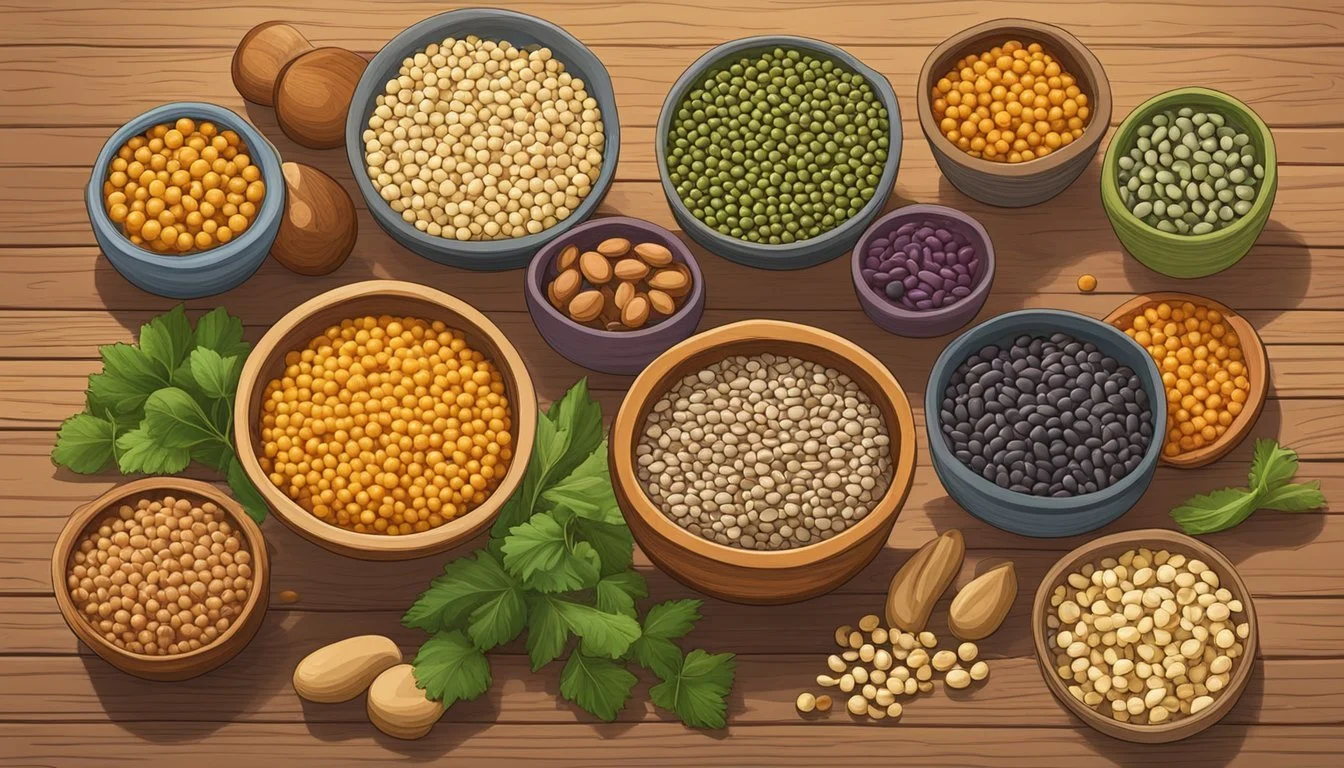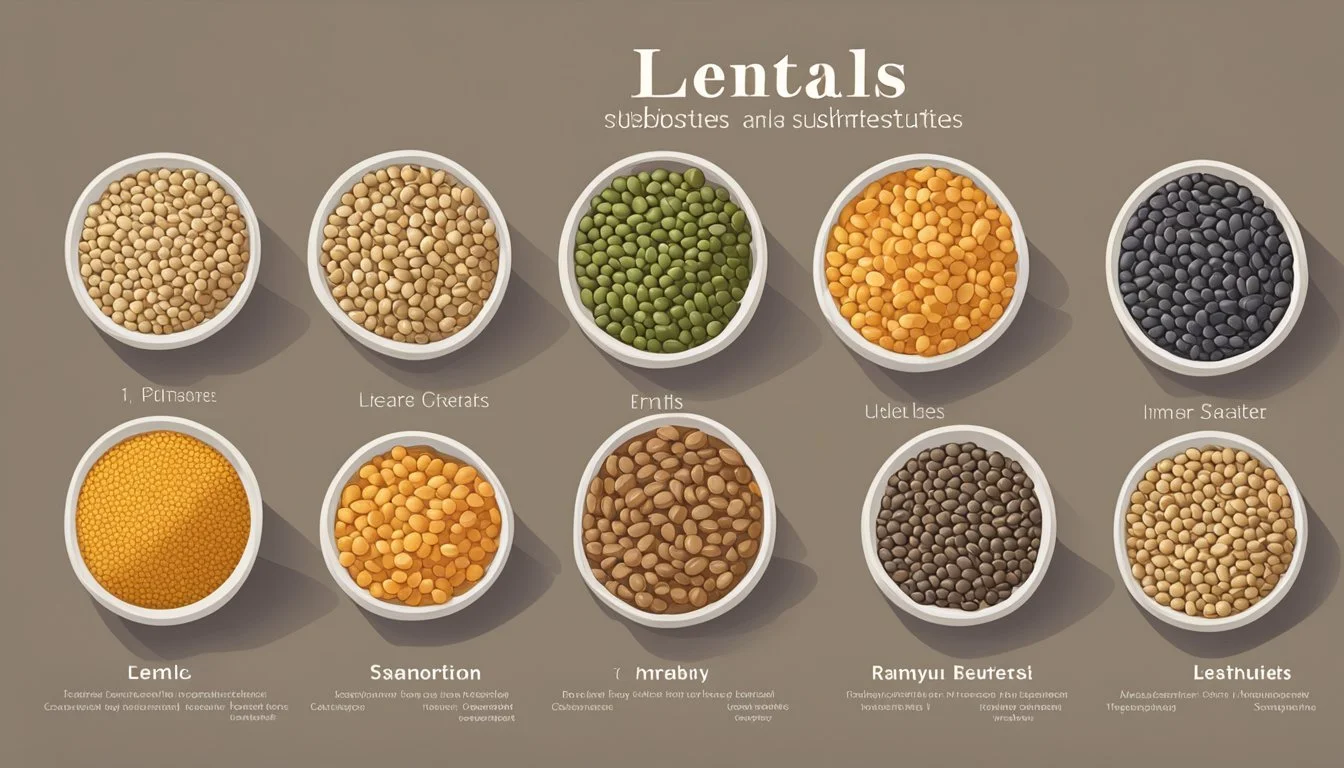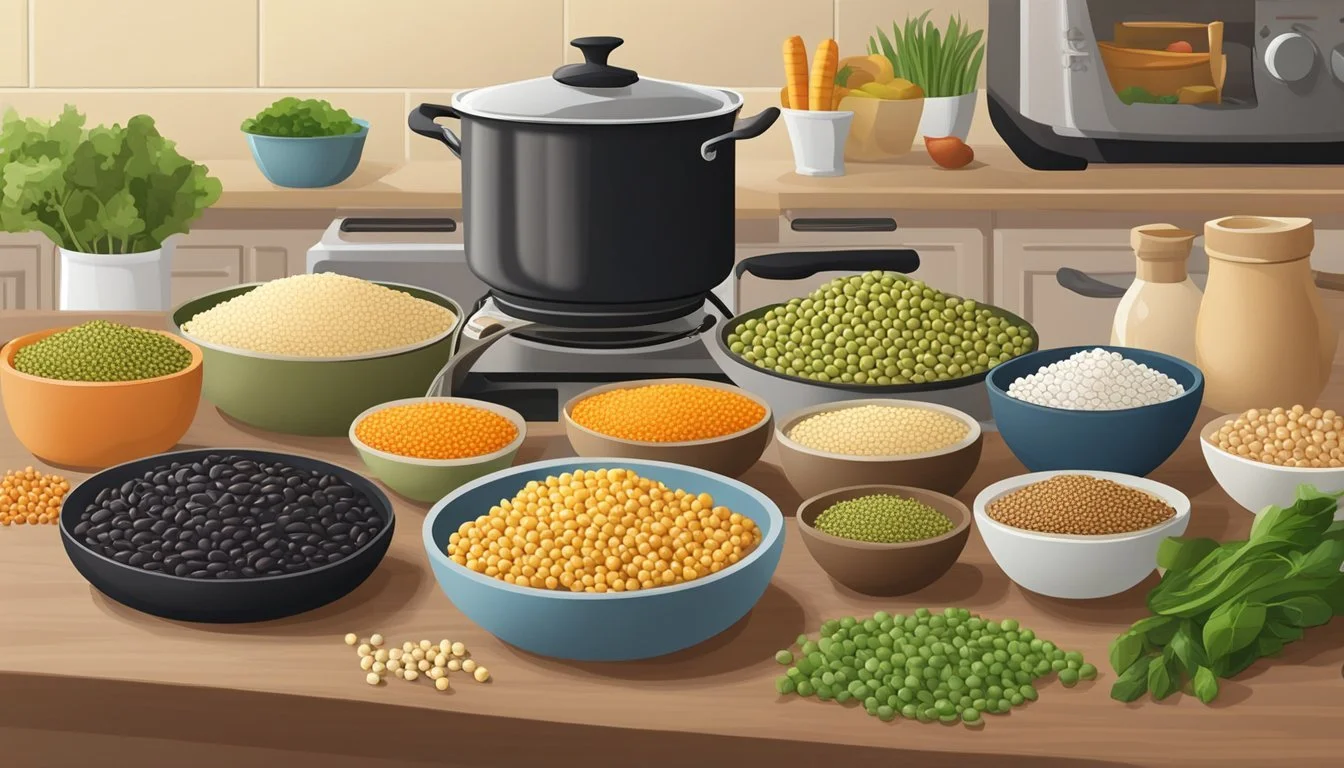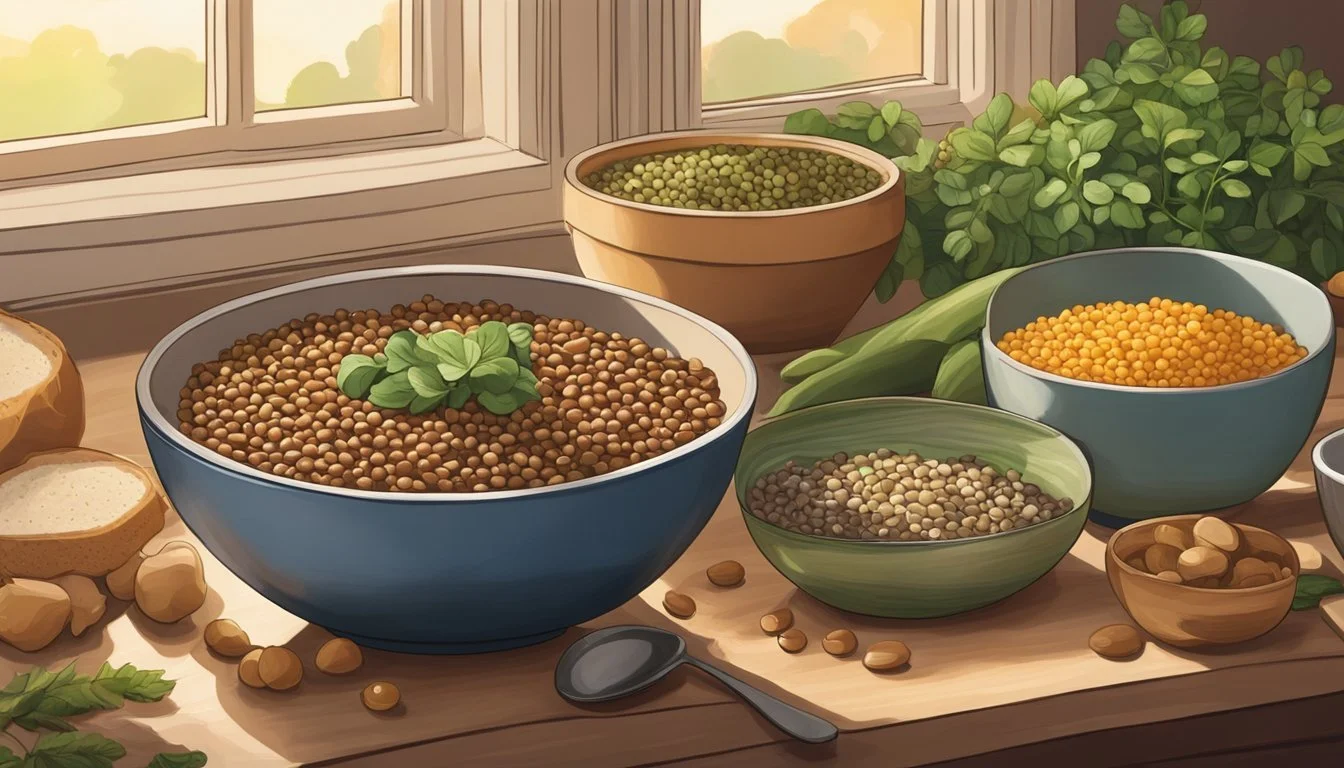Lentils Substitutes
Best Alternatives for Cooking
For those seeking an alternative to lentils, there are plenty of viable options that not only serve as great substitutes but also pack a punch in terms of nutritional value. Substitutes such as beans, chickpeas, and quinoa can effectively replace lentils in various dishes, offering comparable levels of protein and other essential nutrients. Whether added to soups, stews, or salads, these legumes and grains ensure that your meals remain hearty and satisfying.
Chickpeas, for instance, bring a slightly nutty flavor and a hearty texture to dishes, making them a versatile substitute. Cannellini beans, known for their creamy texture, can also mimic the consistency of lentils and enhance the flavor profile of many recipes. Quinoa, a protein-rich grain, is another excellent option that can be easily incorporated into your diet.
Choosing the right substitute depends on your culinary needs and preferences. With options like beans, soybeans, peas, and even tofu, you can maintain the desired taste and texture of your favorite lentil-based recipes. These substitutes not only provide variety but also ensure that you don’t miss out on the nutritional benefits that lentils offer.
Nutritional Benefits of Lentils
Lentils are well-known for their diverse nutritional offerings. They are a great source of protein and packed with essential vitamins and minerals.
Protein Content in Lentils
Lentils are a powerhouse of protein. One-half cup of cooked lentils contains approximately 12 grams of protein. This considerable amount makes lentils an excellent protein source for vegetarians and vegans.
Amino acids are the building blocks of protein, and lentils contain essential amino acids such as lysine. Combining lentils with whole grains can create a complete protein, which includes all nine essential amino acids.
This protein-rich profile not only supports muscle growth but also aids in repairing body tissues.
Vitamins and Minerals
Lentils are rich in various vitamins and minerals. They contain high levels of iron, which is crucial for transporting oxygen in the blood. A half-cup serving provides about 3.3 milligrams of iron, helping to combat iron deficiency anemia.
Folate is another key nutrient found in lentils. One-half cup offers around 179 micrograms of folate, supporting DNA synthesis and repair. This is particularly important for pregnant women.
Moreover, lentils provide considerable amounts of fiber, enhancing digestive health and promoting regular bowel movements. A serving contains approximately 8 grams of dietary fiber.
Furthermore, lentils supply phosphorus and manganese, aiding bone health and metabolism. This diverse range of nutrients makes lentils an essential component of a balanced diet.
Types of Lentils and Their Unique Qualities
Lentils come in various types, each with distinct colors, sizes, and cooking times. These characteristics influence their culinary uses and nutritional value. Here are the unique qualities of green, brown, red, yellow, and specialty lentils.
Green and Brown Lentils
Green Lentils: Known for their earthy, peppery flavor, green lentils hold their shape well when cooked. They range in color from pale green to spotted green-brown. Cooking time is typically around 30 to 45 minutes. They are ideal for salads, pilafs, and side dishes due to their firm texture.
Brown Lentils: These are the most common and versatile type. They can vary in color from khaki-brown to dark black. Brown lentils have a mild, earthy taste and keep their shape during cooking, making them perfect for soups and stews. Cooking time is about 20 to 40 minutes.
Red and Yellow Lentils
Red Lentils: These lentils are sweet and nutty with a color spectrum ranging from gold to orange to red. They cook faster than other lentils, typically in 15 to 20 minutes, and break down easily, creating a creamy consistency. Red lentils are great for curries, soups, and stews where a thick, smooth texture is desired.
Yellow Lentils: Similar to red lentils in cooking behavior but slightly milder in taste. They also turn soft quickly and are perfect for Indian dals and thickening soups. Their cooking time is short, usually about 15 to 20 minutes, making them a convenient choice for quick meals.
Specialty Lentils
Black Lentils (Beluga Lentils): Named for their resemblance to Beluga caviar, black lentils are small, round, and dark. They have a robust, somewhat meaty flavor and maintain their shape during cooking. With a cooking time of approximately 25 to 30 minutes, they are excellent in salads, sides, or as a bed for proteins due to their firm texture.
Matar Dal (Split Peas): Available in yellow and green, these lentils have a hearty, chewy texture and rich, earthy flavor. They are often used in dishes requiring a mushy texture, like traditional Indian dals. Cooking times can vary but generally are around 30 to 45 minutes.
Each type of lentil offers unique benefits, making them versatile ingredients in various cuisine styles. From salads to soups, and stews to side dishes, the distinctive qualities of different lentils can be leveraged to enhance a wide range of recipes.
Common Lentil Substitutes
Lentils are a staple ingredient in many dishes due to their high protein content and versatility. When lentils are unavailable, several substitutes can offer similar benefits in texture and nutrition.
Bean Substitutes
Chickpeas are a prime substitute for lentils. They possess a slightly nutty taste and a creamy texture, making them excellent for soups, stews, and salads. Chickpeas are rich in protein, fiber, and essential nutrients.
Black beans and kidney beans can also serve as effective replacements. Black beans provide a robust flavor and chewy texture, while kidney beans hold up well in hearty dishes. Both are rich in protein and can match the nutritional profile of lentils.
Pea Substitutes
Split peas, particularly green and yellow varieties, are close cousins to lentils. They share similar cooking times and nutritional values, with high protein and fiber content. Split peas break down into a creamy consistency, suitable for soups and purees.
Green peas can be used as a lentil substitute, especially when a sweeter flavor is desired. While they hold their shape better than split peas, they can still blend seamlessly into stews and vegetarian patties.
Grain Substitutes
Quinoa is a notable grain substitute for lentils. It is a complete protein source, containing all nine essential amino acids. Quinoa's fluffy texture and slightly nutty flavor make it versatile in salads, soups, and side dishes.
Barley adds a chewy texture and mild flavor to dishes that traditionally use lentils. It is high in fiber and can maintain its form during cooking, which lends itself well to soups and stews.
Nut and Other Protein Substitutes
Tofu can be crumbled or cubed, acting as a high-protein replacement in various dishes. Its neutral flavor allows it to absorb spices and sauces effectively, making it a versatile addition to soups, salads, and stir-fries.
Peanuts offer a crunchy texture and distinct flavor, adding a unique twist to recipes requiring lentils. They are high in protein and can be included in salads, stir-fries, or blended into sauces.
These substitutes ensure that dishes remain nutritious and delicious while accommodating the absence of lentils.
Choosing the Right Substitute
When selecting a substitute for lentils, it's key to consider factors like flavor compatibility, texture, and cooking preparation. Each of these elements can significantly impact the outcome of your dish.
Flavor Compatibility
Flavor plays a crucial role in choosing a substitute. Lentils have a mild, earthy taste that blends well with various spices. Chickpeas, also known as garbanzo beans, offer a slightly nutty flavor and can be used in soups and salads. Quinoa is another suitable option. It has a unique, slightly nutty flavor that complements many dishes.
Black beans provide a deeper, more intense flavor. They're ideal for hearty dishes. Cannellini beans have a milder taste, making them versatile for dishes that require a subtler flavor profile.
Textural Considerations
Texture is as important as flavor. Lentils are known for their tender but firm texture. Chickpeas have a firmer bite, which can add a pleasing texture to various recipes. When cooked, quinoa provides a fluffy yet slightly crunchy texture, suitable for salads and bowls.
Black beans are soft and creamy, making them perfect for soups and stews. Cannellini beans offer a creamy texture while maintaining a slight firmness, ideal for casseroles and dips. Each substitute brings a distinct texture that can enhance or alter your dish.
Cooking and Preparation
Cooking times and methods can vary significantly among substitutes. Quinoa cooks relatively quickly, in about 15 minutes, making it a convenient option. Chickpeas and black beans often require soaking overnight and a longer cooking time unless using canned versions, which are pre-cooked.
Cannellini beans usually need soaking overnight and then simmering until tender, similar to chickpeas. Considering the prep and cooking time is essential to incorporate the substitutes seamlessly into your recipes. Using canned varieties can save time and are a practical choice.
Each of these substitutes brings something unique to the table. By matching their flavors, textures, and cooking requirements to your recipe, you can achieve a delicious and satisfying meal.
Substitutes in Specific Dishes
When replacing lentils in various dishes, it's crucial to select substitutes that match the texture, taste, and nutritional profile. Certain substitutes excel in specific recipes due to their unique properties.
Soups and Stews
In soups and stews, chickpeas and cannellini beans are outstanding substitutes.
Chickpeas, with their slightly nutty flavor and ability to hold shape when cooked, can be used in hearty soups and stews. They add both texture and protein to the dish.
Cannellini beans offer a creamy texture that melds well with other ingredients. They provide a mild flavor that doesn’t overpower the dish.
Quinoa can also be used, adding a slightly grainy texture and boosting the protein content. Use these substitutions to maintain a robust and satisfying soup or stew.
Salads and Cold Dishes
For salads and cold dishes, substitutes such as chickpeas, tofu, and peanuts provide excellent alternatives.
Chickpeas are ideal for cold salads due to their firmness and nutty flavor. They contribute protein and fiber, making them a nutritious choice.
Tofu works well in cold dishes, providing a neutral flavor and a soft texture that absorbs dressings and marinades effectively. It's an excellent protein source, especially for plant-based diets.
Peanuts introduce a crunchy texture and a distinctive taste, adding depth to cold salads. They also bring a substantial amount of protein and healthy fats, enhancing the nutritional value of the salad.
Hearty Entrees and Casseroles
In hearty entrees and casseroles, soybeans, chickpeas, and kamut grains are strong substitutes.
Soybeans offer a dense texture and rich protein content, making them suitable for heavier dishes. They blend well with various flavors and maintain their shape during cooking.
Chickpeas remain a versatile option, adding a hearty, satisfying element to casseroles. Their nutty flavor complements numerous ingredients and spices.
Kamut grains provide a chewy texture and nutty flavor, enhancing the casserole’s complexity. High in protein and fiber, they contribute significantly to the dish's nutritional profile.
These substitutes ensure that casseroles remain filling and flavorful without the use of lentils.
Global Influences on Lentil Substitution
Lentils are a staple ingredient across many cuisines, with various cultures finding their unique substitutes based on local culinary preferences and available ingredients.
Indian Cuisine
In India, lentils are a key component of many traditional dishes, but substitutes like chickpeas and mung beans are also common. Chickpeas (garbanzo beans) are often used in dishes such as chana masala, providing a nutty flavor. Mung beans are another alternative, especially in dals and soups, offering a slightly sweet taste and smooth texture. Both options are rich in protein and fiber, essential for vegetarian diets prevalent in the region.
Black gram (urad dal) also serves as a substitute in South Indian dishes like dosa and idli batter, maintaining the nutritional and textural integrity of the meal.
Middle Eastern Dishes
Middle Eastern cuisine often substitutes lentils with chickpeas and fava beans. Chickpeas are fundamental in dishes like hummus and falafel. Their nutty flavor and creamy texture make them versatile substitutes. Fava beans, used in traditional breakfasts like ful medames, offer a robust flavor and high protein content, making them another favored substitute.
Lentil-based soups and stews in the Middle East may also use bulgur as a substitute. Bulgur provides a chewy texture and is rich in fiber and minerals, fitting seamlessly into recipes that typically use lentils.
Western Alternatives
Western cuisines have adopted various substitutes like black beans, pinto beans, and quinoa for lentils. Black beans are frequently used in salads and stews for their earthy flavor and high protein content. Pinto beans, known for their slightly sweet taste, are a favorite in chili and soups as a lentil substitute.
Quinoa stands out for its complete protein profile, containing all nine essential amino acids. Its versatility allows it to be used in stews, salads, and even casseroles, making it a popular substitute for lentils. Green split peas are another alternative, often used in soups to provide a similar texture and nutritional benefit as lentils.
Different regions offer a variety of substitutes, each bringing their unique flavors and nutrients, ensuring that dishes remain nutritionally rich and flavorful even without lentils.
Incorporating Lentil Substitutes into Diet
Substitutes for lentils, such as beans, chickpeas, and tofu, provide many of the same nutritional benefits. This section will explore how these alternatives can be included in balanced meals, support vegetarian and vegan diets, and aid in weight management.
Balanced Meals
Lentil substitutes like chickpeas, black beans, and quinoa can be integral to creating balanced meals that include essential nutrients. Chickpeas, for example, are high in protein and dietary fiber, making them a great addition to salads, soups, and stews. Black beans provide a rich source of iron and can be utilized in dishes like burritos and chili.
Quinoa is another excellent option; it is a complete protein, containing all nine essential amino acids. It also pairs well with vegetables and lean meats to make hearty and nutritious meals. Organizing meals to include these substitutes ensures that one can maintain a diet rich in variety and nutrients.
Vegetarian and Vegan Diets
For those following vegetarian or vegan diets, lentil substitutes are indispensable. Tofu and soybeans are particularly beneficial due to their high protein content. Tofu can be marinated and grilled or added to stir-fries, while soybeans can be used in making soy milk or soy-based products.
Split peas and peanuts also serve as great alternatives. Split peas have a similar texture to lentils and are perfect for making soups or purees. Peanuts, although often overlooked, are high in protein and can be turned into peanut butter, a versatile ingredient in many vegan dishes.
Weight Management
Lentil substitutes can be effective in weight management due to their high fiber and protein content. Beans like cannellini and black beans provide a feeling of fullness which can help in reducing overall calorie intake. They can be added to salads, made into dips like hummus, or used in main dishes.
Chickpeas are also beneficial in this regard as they are low in fat but high in fiber, aiding in digestion and helping to control weight. Adding chickpeas to your meals, whether in a roasted form for snacks or as part of a main dish, can be an effective strategy for those looking to manage their weight.
Cooking Tips for Lentil Substitutes
Cooking lentil substitutes involves understanding the specific preparation techniques for each. Beans, grains, and soy products each have unique methods to maximize flavor and texture.
Preparing Beans and Peas
Beans and peas, such as chickpeas and black beans, require proper soaking and cooking methods for the best results.
Soak dried beans overnight in plenty of water. This helps to soften them and reduce cooking time.
Boil the beans in fresh water until tender. This can take anywhere from 1-2 hours, depending on the type and size of the beans.
For quicker preparation, use canned beans. Drain and rinse them to remove excess sodium and improve texture.
Roasting chickpeas adds a crunchy texture to salads or snacks. Toss with olive oil and seasoning, then roast at 400°F for 20-30 minutes, stirring occasionally.
Grain Cooking Techniques
Quinoa, kamut, and similar grains can replace lentils while offering different textures and flavors.
Rinse quinoa thoroughly under cold water to remove the bitter saponin coating. This step is crucial for a pleasant taste.
Use a 1:2 ratio of grains to water. Bring to a boil, then reduce to a simmer, covering for 15-20 minutes or until water is absorbed.
For extra flavor, toast quinoa in a dry pan for 5 minutes before boiling. This adds a nutty taste.
Kamut, an ancient grain, should be soaked overnight before boiling. Cook it like pasta, in plenty of water, for around 40-60 minutes until tender.
Utilizing Nuts and Soy Products
Nuts like peanuts and soy products such as tofu and soybeans can provide excellent protein alternatives.
Tofu can be cubed and marinated to absorb flavors. Try soy sauce, garlic, and ginger for a savory dish.
Roast soybeans for a crunchy snack. Boil for 5 minutes, season, and roast at 375°F for 15-20 minutes.
Peanuts can be ground into a paste for sauces or stir-fries. They can also be used whole in savory dishes for a crunchy texture.
For an extra firm texture, press tofu to remove excess water before cooking. Use a tofu press or wrap it in a cloth and place a weight on top for 30 minutes.
Conclusion
Lentils are not only a great source of plant-based protein, but they are also versatile in many recipes.
For those who prefer alternatives, chickpeas and black beans offer similar nutritional benefits and can be substituted in soups, stews, and salads.
Quinoa and green split peas are also excellent options. Quinoa, in particular, is a complete protein, containing all nine essential amino acids.
Cannellini beans can be used for their creamy texture and mild flavor. They complement various ingredients well, making them suitable for many dishes.
For a more textured option, consider tofu and soybeans. These are rich in protein and can easily replace lentils in numerous recipes.
Additionally, peanuts and kamut offer unique flavors and nutritional values. While not as common, they can still be effective substitutes in specific dishes.
Consider these alternatives next time lentils are unavailable. Each one brings its own unique qualities to your recipes.






